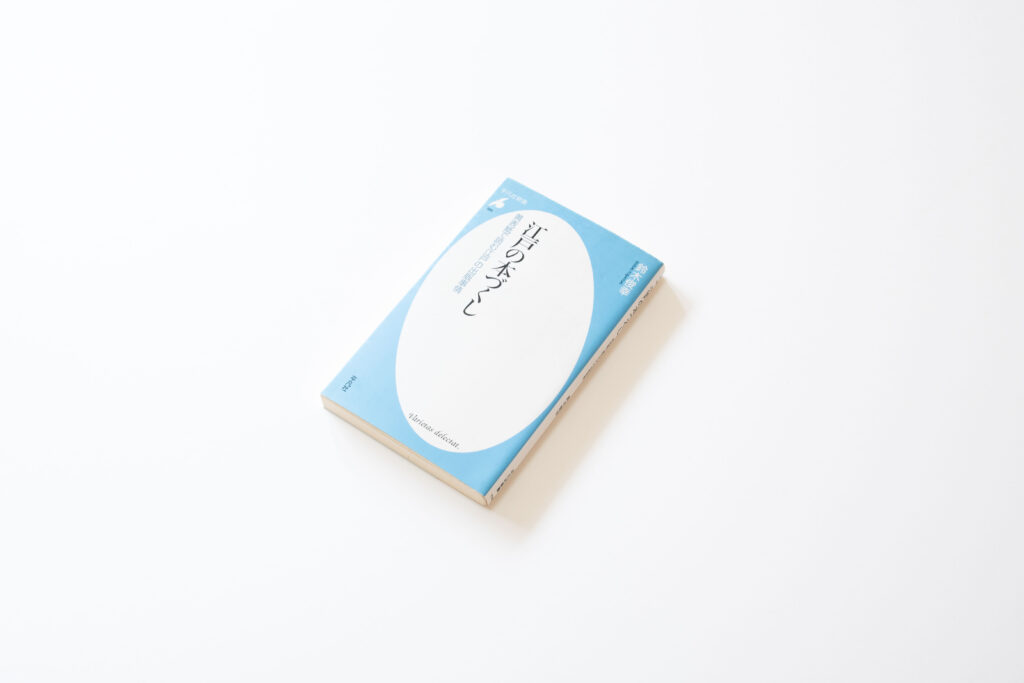Today, I would like to introduce “The World of Edo Books: Publishing Situation in Edo Read by Kibyōshi,” written by Toshiyuki Suzuki. The content explains the publishing situation in Edo, while reading “Gozonjinoshoubaimono,” written by Santou Kyouden.

“Gozonjinoshoubaimono” is a Kibyōshi (yellow-cover illustrated book for adults) published in the Edo period, which is full of small jokes for expert readers. In my opinion, this book is a publication personification of a romantic comedy. Illustrated books at the time, such as “Aohon,” “Akahon,” “Kurohon,” and Ukiyoe of “one painting” and “Nishikie,” as well as the well-known “The Tale of Genji” and “Essays in Idleness” are all personified, and the city of Edo is a madhouse. Although it is an illustrated book with depth and full of superb humor, the content is often confusing for contemporary readers. The detailed explanation helps readers understand the content. I enjoyed studying both the publishing situation in Edo and sophisticated humor. It is clear that Santou Kyouden didn’t think that his jokes at the time would be so thoroughly explained in great detail more than 200 years later.
Personification is a known expression in the present day. In the subculture, swords, battleships, racehorses, etc. are personified. While enjoying studying, I read this book to get to know our distant predecessors. There may be readers who encounter a new field through personification. How about trying publication in Edo for your next reading topic?
A comment on “The World of Edo Books: Publishing Situation in Edo Read by Kibyōshi” and introduction of the related book by Isao Suzuki, representative of Type Project, are as follows:
After enjoying the exciting entertainment booklet, “The World of Edo Books,” how about reading “The Kawaraban of Edo,” which focuses on a single sheet (or several sheets) of the news flash media called ‘kawaraban’?
Kawaraban initially started as an official gazette, but it gradually handled gossip and scandals, which delighted the common people in the Edo period. Although it is a primitive and rough printed matter far from the exquisite and delicate technique used in Ukiyoe, its lively expression, distinctive of the cheap, single sheet printing, is said to be the characteristic of kawaraban.
The common people in the Edo period made jokes in various ways and resisted against authority in this time of arrogance. The publishers who resisted against authority were punished, but Edo residents who valued this spiritedness praised them. The townspeople knew well that simple seriousness is weak against authority.
Kawaraban was prohibited soon after its popularization. The sellers, called yomiuri, hid their faces with braided straw hats, and struggled to escape from the eyes of the officials by teaming up in pairs. Reading a passage from kawaraban aloud in husky voice with a shamisen in one hand for hawking is thick with the color of performance. They were tough people.
Book Information:
“The World of Edo Books”
Author: Toshiyuki Suzuki
Publisher: Heibonsha
Purchase Information:
Heibonsha
https://www.heibonsha.co.jp/book/b163514.html
Book Information:
“The Kawaraban of Edo”
Author: Kenji Morita
Publisher: Yosensha
Purchase Information:
https://www.amazon.co.jp/dp/4800312744/ref=cm_sw_r_tw_dp_FWC5SYCKQ5NJPYDGKBE3
(T.I)
Series archive Recommended Book / From TP’s Stack
- From TP’s Stack: “Creation of Typefaces That Open a New Era”
- From TP’s Stack: “The Kawaraban of Edo – Identity of Media That Enfevered the Common People”
- From TP’s Stack: “Creation of Typefaces”
- From TP’s Stack: “Cultural History of the Character”
- From TP’s Stack: “The History of Mincho Typeface”
- From TP’s Stack: “Characters of Prayers” and “Characters of Cities”
- From TP’s Stack: “The World of Edo Books: Publishing Situation in Edo Read by Kibyōshi”
- From TP’s Stack: “Portrait of 34 Great Craftsmen”
- From TP’s Stack: “The History of Japanese Lettering”
- From TP’s Stack: “Johnston’s Underground Type”
- From TP’s Stack: “The Beauty of Characters and the Power of Characters”
- From TP’s Stack: “It’s Still Railroad Letters”